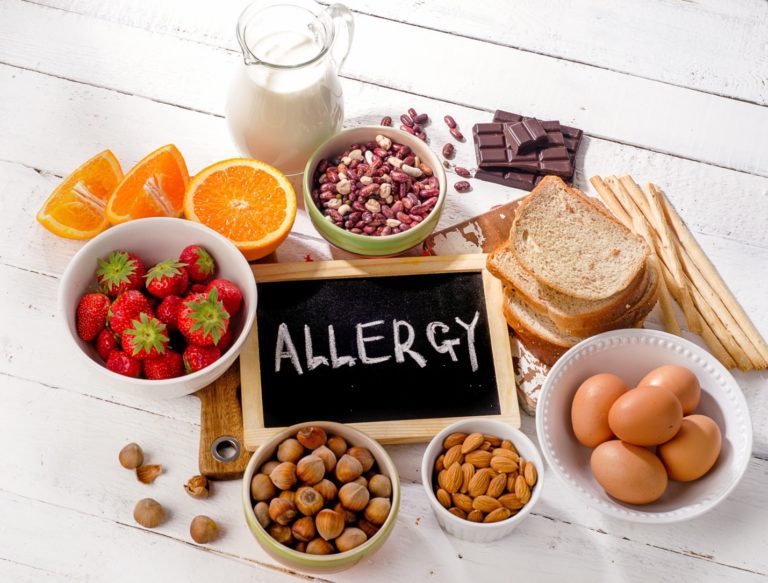Food allergy refers to an overreaction of the body’s immune system to a food protein which can be serious or even fatal. These reactions are called IgE-mediated or Immediate Type Hypersensitivity and are different from food intolerances or other interactions between foods and the immune system. The term we give for the set of symptoms caused by this type of allergy is anaphylaxis. Anaphylaxis symptoms include flushing or swelling of the skin, hives, itchy/watery/red eyes, difficulty swallowing or breathing, wheezing, shortness of breath, nausea, vomiting, diarrhea, heart racing, chest pain, lightheadedness and loss of consciousness. Hives are the most common symptom and can occur without any other symptoms of anaphylaxis.
What causes food allergy? Children are not born allergic to foods, but can have a genetic tendency to develop allergy to exposures. We know that children who have parents or siblings with food allergy, asthma, allergies or eczema are at greater risk of developing any one of those ailments. Also, if a child has already been diagnosed with asthma, allergies or eczema they are more likely to develop food allergy than someone who is not. Of course, “more likely” doesn’t mean “will definitely happen” and just because you have no known risk factors doesn’t mean you can’t develop a food allergy. Then you have to be exposed to a food which generally means eating it although for some it can mean through the skin (especially if a child has eczema), or potentially through breast milk. Exposure does not happen in utero or prior to birth. After the exposure the body develops an immune response and at the next exposure can react with symptoms of anaphylaxis.
While any food can cause an allergic reaction, most allergies are caused by milk, eggs, nuts, fish/shellfish, peanuts, and soy. As the name Immediate Type Hypersensitivity implies, these reactions generally happen within minutes to a couple of hours after consumption of the food; not more than 4 hours after a food was consumed. Once a food allergy is suspected it can be confirmed with skin or blood testing. At Pediatric Associates we can perform blood testing at any of our office and skin testing at our Downtown Office. Unfortunately, these tests have a lot of false positives and therefore should only be done to foods that a person has had a suspected reaction to. Occasionally the diagnosis needs to be confirmed with a food challenge in a doctor’s office. Once the allergy is confirmed then strict avoidance of that food is recommended as well as availability of an antihistamine and epinephrine any time a child eats. While the most common symptoms are the ones the child had in a previous reaction you cannot predict severity by past reactions which is why injectable epinephrine must be available at all times.
So, when do we recommend that children first be introduced to the most commonly allergenic foods? It turns out that these foods should be introduced at the same time as other solids between 4 and 6 months of age. There is no evidence that delaying introduction of these foods, even in children who are at high risk of developing food allergy, will in any way prevent food allergy. In fact, a recent study of high-risk infants actually demonstrated a decrease in peanut allergy in those that had early introduction to peanuts. For more information check out the FARE website at https://www.foodallergy.org/.
Alaina M. Brown, MD FAAP

